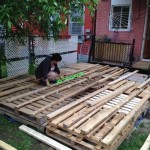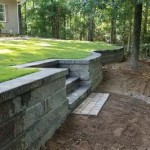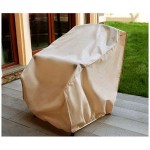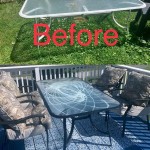Stone Pavers Patio Ideas: Designing Your Outdoor Oasis
Creating an inviting and functional outdoor living space often begins with the foundation: the patio. Stone pavers offer a durable, aesthetically pleasing, and versatile solution for crafting patios that can transform any backyard into a relaxing retreat or an entertainment hub. The following explores various stone paver patio ideas, providing insights into design considerations, material selection, and installation factors to help realize the ideal outdoor space.
Choosing the Right Stone Paver Material
The foundation of any successful stone paver patio lies in selecting the appropriate material. A variety of stone options are available, each possessing unique characteristics in terms of aesthetics, durability, and cost. Understanding these differences is crucial for making an informed decision that aligns with budgetary constraints, design preferences, and functional requirements.
Concrete Pavers: Concrete pavers represent a cost-effective and versatile choice. They are manufactured in a wide range of shapes, sizes, colors, and textures, mimicking the appearance of natural stone while offering consistent dimensions and easier installation. Concrete pavers are also highly durable and resistant to cracking, staining, and fading, making them suitable for high-traffic areas and harsh climates. Their manufactured nature allows for precise control over their properties, including permeability, which can be advantageous for drainage purposes.
Brick Pavers: Brick pavers offer a classic and timeless aesthetic, lending a warm and inviting character to any patio. Typically made from clay, brick pavers are known for their durability and resistance to weathering. They are available in a variety of colors, ranging from traditional red to more contemporary shades of gray and brown. Brick pavers can be laid in various patterns, such as herringbone, running bond, and basketweave, allowing for creative design possibilities. However, they can be more susceptible to staining than some other stone options and may require periodic sealing.
Natural Stone Pavers: Natural stone pavers encompass a wide array of materials, including flagstone, slate, travertine, bluestone, and granite. Each type of natural stone possesses unique characteristics in terms of color, texture, and durability. Flagstone, for example, offers a rustic and organic look with its irregular shapes and varied hues. Slate provides a smooth and elegant surface with its fine grain and subtle color variations. Travertine is known for its porous texture and warm beige tones. Bluestone is a dense and durable option with a distinctive blue-gray color. Granite is exceptionally hard and resistant to scratching and staining, making it ideal for high-traffic areas. Natural stone pavers typically require more specialized installation techniques due to their inherent variations in size and thickness.
Porcelain Pavers: Porcelain pavers are a relatively newer option that offers excellent durability, low maintenance, and resistance to staining, fading, and frost damage. They are manufactured with high precision, ensuring consistent dimensions and easy installation. Porcelain pavers are available in a wide range of colors, textures, and patterns, mimicking the appearance of natural stone, wood, and even concrete. They are a particularly good choice for areas around pools and water features due to their non-slip surface and resistance to water damage.
Designing Your Patio Layout and Pattern
Beyond material selection, the layout and pattern of the pavers play a vital role in the overall aesthetic and functionality of the patio. Careful planning and consideration of various design elements can significantly enhance the visual appeal and usability of the outdoor space.
Size and Shape: The size and shape of the patio should be proportionate to the overall dimensions of the yard and the intended use of the space. A small patio may suffice for a cozy seating area, while a larger patio may be required for dining, entertaining, or accommodating multiple activities. Consider the shape of the patio as well. Rectangular or square patios are generally easier to design and install, while curved or irregularly shaped patios can add visual interest and create a more natural feel.
Paver Patterns: Various paver patterns can be employed to create different visual effects. The running bond pattern, where pavers are laid in a staggered fashion, is a simple and classic choice. The herringbone pattern, where pavers are laid at a 45-degree angle, adds a touch of sophistication and visual interest. The basketweave pattern, where pavers are arranged in alternating groups of two or more, creates a textured and dynamic surface. The circular pattern, where pavers are arranged around a central point, can be used to create a focal point or define a specific area within the patio. Consider using a combination of patterns to add visual complexity and define different zones within the patio.
Borders and Edges: Borders and edges can define the perimeter of the patio and add a finishing touch. A border can be created using a different color or type of paver, or by using a contrasting material such as cobblestones or gravel. Edges can be straight, curved, or angled, depending on the desired aesthetic. Consider using edging restraints to prevent the pavers from shifting or spreading over time.
Permeable Paving: Consider permeable paving options to mitigate stormwater runoff and improve drainage. Permeable pavers allow water to filter through the surface and into the underlying soil, reducing the burden on municipal drainage systems and replenishing groundwater. Various types of permeable pavers are available, including those with wider joints filled with gravel or those with built-in drainage channels.
Integrating with Landscaping: Integrate the patio seamlessly with the surrounding landscaping by incorporating planting beds, trees, and shrubs. Planting beds can soften the edges of the patio and add color and texture. Trees can provide shade and privacy. Shrubs can define pathways and create visual barriers. Consider the mature size and shape of plants when selecting species to ensure they do not overcrowd the patio or obstruct views.
Installation Considerations for a Durable Patio
Proper installation is crucial for the longevity and stability of a stone paver patio. A poorly installed patio can be prone to shifting, settling, and cracking, leading to costly repairs or replacements. It is imperative to follow established best practices for site preparation, base construction, and paver laying to ensure a durable and aesthetically pleasing result.
Site Preparation: The initial step involves preparing the site by removing any existing vegetation, topsoil, and debris. Excavate the area to the required depth, typically 6-8 inches, to accommodate the base materials and pavers. Ensure proper drainage by sloping the excavation away from the house or other structures. Compact the subgrade thoroughly using a plate compactor to provide a stable foundation.
Base Construction: The base is the foundation upon which the pavers will rest and is critical for distributing weight and preventing movement. A well-constructed base typically consists of two layers: a sub-base of compacted gravel and a bedding layer of sand. The sub-base should be 4-6 inches thick and compacted in layers using a plate compactor. The bedding layer should be 1-2 inches thick and screeded to a smooth and level surface. Use a paver base calculator to determine the correct amount of materials needed.
Paver Laying: Begin laying the pavers according to the chosen pattern, starting from a straight edge or corner. Use a rubber mallet to gently tap the pavers into place. Maintain consistent joint spacing between the pavers, typically 1/8 to 1/4 inch. Check the level of the pavers frequently using a level and adjust as needed by adding or removing sand from the bedding layer. Cut pavers to fit around edges, corners, and other obstacles using a paver splitter or a wet saw.
Joint Sanding and Compaction: Once the pavers are laid, sweep polymeric sand into the joints to stabilize the pavers and prevent weed growth. Compact the pavers using a plate compactor with a rubber mat to protect the surface. Water the patio thoroughly to activate the polymeric sand, causing it to harden and lock the pavers in place. Repeat the sanding and watering process as needed to ensure the joints are completely filled. Be sure to follow the manufacturer's instructions for the specific type of polymeric sand being used.
Drainage Solutions: Addressing drainage is crucial for preventing water damage and ensuring the longevity of the patio. Ensure that the patio is properly sloped away from the house or other structures to allow water to drain freely. Consider installing drainage systems, such as French drains or channel drains, to collect and redirect excess water. Permeable pavers can also help to improve drainage by allowing water to filter through the surface and into the underlying soil.
By carefully considering material selection, design elements, and installation techniques, it is possible to create a stone paver patio that enhances the beauty and functionality of any outdoor space. A well-designed and properly installed patio can provide years of enjoyment and add value to any property.

10 Tips And Tricks For Paver Patios

Paver Patio Ideas The Cards We Drew

450 Best Patio With Pavers Ideas Paver Design

40 Patio Pavers Ideas Design For Paved Patios

14 Paver Patio Ideas For The Best Backyard Retreat

5 Paver Patio Ideas To Add Your Outdoor Landscape Design In Bedford Nh Northern Lights

Outdoor Paver Patios Types Ideas Styles More Environmental Designs

6 Brilliant And Inexpensive Patio Ideas For Small Yards Cobblestone

Paver Patio Ideas S Belgard Pavers

59 Beautiful Paver Patio Ideas For Your Home Install It Direct








